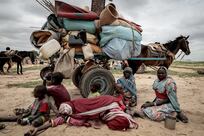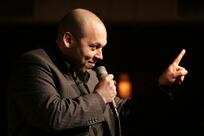KABUL // A former president of Afghanistan and chief negotiator for peace talks with the Taliban was killed yesterday at his home in Kabul when a suicide bomber detonated explosives hidden in his turban.
A man posing as a reformed Taliban fighter seeking to make peace with the government reportedly detonated the bomb as he greeted Burhanuddin Rabbani, the 71-year-old head of the Afghan High Peace Council, at about 6pm local time, Afghan security officials said.
The explosion set off an alarm system at the nearby US embassy, which was hit by at least half a dozen rockets in a prolonged Taliban attack last week.
Four of Rabbani’s bodyguards were also killed. Masoom Stanakzai, another member of the High Peace Council and key adviser to Afghan President Hamid Karzai, was injured, health officials said.
Fazel Karim Aimaq, a former legislator from Kunduz province and a friend of Rabbani’s, told reporters outside the former president’s home that a man who arrived to meet Rabbani was not properly searched. The visitor shook Rabbani’s hand and bowed as a sign of respect, Mr Aimaq said.
“Then his turban exploded,” he said.
Barack Obama, the US president, said the killing would not deter the US and Afghanistan from helping that country’s people live freely. He said Rabbani’s death was tragic because he was a man who cared deeply about Afghanistan. Mr Obama commented at the top of a meeting in New York with Mr Karzai.
Rabbani’s killing marks the latest in a series of high-profile assassinations carried out by Taliban insurgents against key government figures in the past several months.
The campaign has killed some of Mr Karzai's most trusted aides. Other insurgent attacks in recent months, including against the US embassy and Kabul's landmark Intercontinental Hotel, point to an emboldened insurgency able to carry out sophisticated attacks in the fortified capital.
This attack appears to have struck at the heart of the US-funded and government-backed peace process in Afghanistan. The US supported Rabbani, a fierce anti-Taliban commander in the 1990s, as the leader of the peace initiative just over a year ago.
Since then, little headway has been made persuading Taliban fighters to lay down arms and join the government.
Rabbani, an ethnic Tajik whose presidential term was marred by the Afghan civil war that saw the Taliban seize power, was a reviled figure among the ethnic Pashtuns that make up the Taliban ranks.
Many analysts said the appointment of Rabbani as peace council chief indicated to the Taliban that the Afghan government was not serious about negotiations.
Some members of the peace council said Rabbani opposed bringing Taliban leaders to the table as a unified group.
"We still do not have a single achievement through our efforts with the peace council so far," Hajji Musa Hotak, a member of the High Peace Council and former Taliban commander, told The National in a recent interview.
“I am a member of the committee responsible for initiating contact, and we still do not have contact with Taliban leaders through official channels.”
Just last week, Rabbani led a conference of provincial governors and officials who met in Kandahar to develop policies for reintegrating insurgents who want to give up the fight.
The reintegration of lower-level militants has started alongside the push for higher-level peace talks as a way to whittle away at the insurgency on both ends. At the conference, he urged those in the provinces to work to counter insurgent propaganda claiming that international forces were invaders in Afghanistan.
Rabbani was president from 1992-1996, heading the Afghan government that preceded the Taliban rule.
[ foreign.desk@thenational.ae ]
* with additional reports from Associated Press




